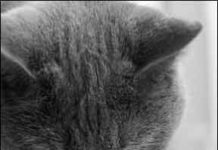The Benefits of a Higher-protein Diet
Conventional wisdom has long held that cats need less protein as they age. The truth is exactly the opposite, says Joseph Wakshlag, DVM, Ph.D., Associate Professor of Nutrition at the Cornell University College of Veterinary Medicine. “What we realize in geriatrics is that nobody pays much attention to muscle mass. We’re starting to realize you lose muscle mass as you age — human, dog, cat. You can’t reverse it,” he says. “You have to lift weights to maintain current muscle mass, but it’s hard to get a cat to lift weights.”
Singles Turn to Pets for a Sense of Family
An intriguing trend has developed among singles in the U.S. Single people — men particularly — are becoming pet owners at rates greater than families. They’re “turning to pets for love and a sense of family,” according to a survey by the American Veterinary Medical Association. In a five-year period, pet ownership among the never married, widowed and divorced grew 16.6 percent. Excluding people who never married, growth in pet ownership among singles rose 17.7 percent during this same period.
Short Takes: June 2013
Obesity among pets in the U.S. continued to climb in 2012, with the number of overweight cats reaching an all-time high. Veterinarians reported that 58.3 percent of their feline patients — up from 55 percent over the previous year — were overweight or obese in the sixth annual survey by the Association for Pet Obesity Prevention (APOP). Given the cat population of 74.1 million in this country, that equals about 43.2 million cats, the association says. Surprisingly, the survey also revealed a “fat gap,” according to APOP founder Ernie Ward, DVM. When veterinarians asked owners to describe their fat cats’ body condition as too thin, normal, overweight or obese, 45.3 percent said normal.
The Biggest Mistake in Giving Treats
Treats provide welcome rewards for good behavior, but their overly generous use can contribute to obesity. One reason is that owners don’t count treats as calories. “But the bigger problem is a multiple-person household in which every time someone walks by, they give the cat a treat,” says Joseph Wakshlag, DVM, Ph.D., Associate Professor of Nutrition at the Cornell University College of Veterinary Medicine.
Short Takes: September 2012
Biologists at the Royal Veterinary College in London may have discovered the reason for the cheetah’s record as the fastest living land mammal. Researchers at the college’s Structure and Motion Laboratory compared the cheetah’s gait to that of racing Greyhounds, whose speed tops out at 37 miles per hour. The big cats have been clocked at 64 miles per hour. “Cheetahs and Greyhounds are known to use a rotary gallop [in which the limbs fall in circular sequence around the body] and physically they are remarkably similar, yet there is this bewitching difference in maximum speed,” says researcher Alan Wilson, Bsc., Ph.d.
Looking Beyond the Food Bowl
Bringing out the nutritional best in your cat goes beyond the food in the bowl. Frequency of meals, location, post-meal bowl cleaning and other environmental factors also influence his health. “One of the biggest problems is that far too many people overfeed their cats, and the cats become overweight and some even become obese,” says nutritionist Joseph Wakshlag, DVM, Ph.D., Associate Professor of Clinical Nutrition at Cornell University College of Veterinary Medicine. “Dogs give you those begging eyes when you sit down to eat, but in most cases, you can get them to go into another room and leave you alone.” They excel at begging. “Cats, however, are aggressive beggars. They will keep purring and meowing. If you tell them to go away, they will just come right back and start meowing again. They are more persistent than dogs and far too often, the person gets frustrated and will get up and put more food in their bowls.”
Ask Elizabeth: September 2012
I work at a large no-kill animal sanctuary with special-needs cats. Often when one becomes ill and stops eating, we tempt him or her with people food like baby food or boiled chicken. I have heard a lot of conflicting things about feeding cats baby food or straight meat. Someone recently told me that a good all-meat baby food and straight chicken are nutritionally complete, but I have read in a few places that cats need other nutrients like taurine and vitamins A and D or they will get very sick. Does straight meat provide full nutrition for cats? In the wild, how do cats get full nutrition if meat does not provide it all? What is the best kind of food for our dear kitties?
Let Them Eat Cake! (Just Don’t Invite Your Cat.)
Sweetness is detected by a specific receptor protein (what we commonly refer to as a ‘taste bud’) in the tongue. Cats are known to be insensitive to sweet tastes, but the specific reason was not known until recently. Researchers analyzed the genes encoding the taste buds in twelve different carnivorous species, including cats (“Major taste loss in carnivorous mammals,” in Proceedings of the National Academy of Sciences, US, 2012 ). They found that those species such as cats — whose diet is exclusively meat-based — had lost the gene encoding the taste bud for sweetness.
Let Them Eat Cake! (Just Dont Invite Your Cat.)
Sweetness is detected by a specific receptor protein (what we commonly refer to as a ‘taste bud’) in the tongue. Cats are known to be insensitive to sweet tastes, but the specific reason was not known until recently. Researchers analyzed the genes encoding the taste buds in twelve different carnivorous species, including cats (“Major taste loss in carnivorous mammals,” in Proceedings of the National Academy of Sciences, US, 2012 ). They found that those species such as cats — whose diet is exclusively meat-based — had lost the gene encoding the taste bud for sweetness.
Considering A Homemade Diet?
Over the past half-century or more, the American pet food industry has worked hard to provide nutritionally sound, affordable and readily available canned and dry cat food. The nutritional contents of these foods are based on the nutrient requirements of cats as published by the National Research Council and/or the Cat Food Nutrient Profiles recommended by the Association of American Feed Control Officials (AAFCO). The feed control officials of the various states and the U.S. Food and Drug Administration monitor the quality of all commercial cat food products.
Why Is Your Cat Such a Finicky Eater?
Cats have earned the reputation for being “finicky,” and this is partly due to physiological factors that cause some foods to be less palatable than others. Like you, your cat senses taste using taste buds, which reside in the surface of the tongue. Within the taste bud a bundle of “gustatory cells” are contained in a small spherical pocket. The taste bud extends from an opening at the surface of the tongue through to deep within the tongue. The gustatory cells are in close contact with fine nerve endings leading into nerves within the tongue.
Are Prescription Diets Necessary?
Trying to adjust your cat’s diet because of a serious medical condition is undoubtedly a good idea. But experts insist that there is a right way and a wrong way to go about it. Some problems may respond readily to a dietary adjustment, while other problems can be more vexing and require treatment aside from nutritional changes.Firstly, remember that therapeutic diets do not cure diseases. They can alleviate clinical abnormalities on a temporary basis, and alleviating these abnormalities can certainly help our beloved pets feel better and give them a higher quality of life.












